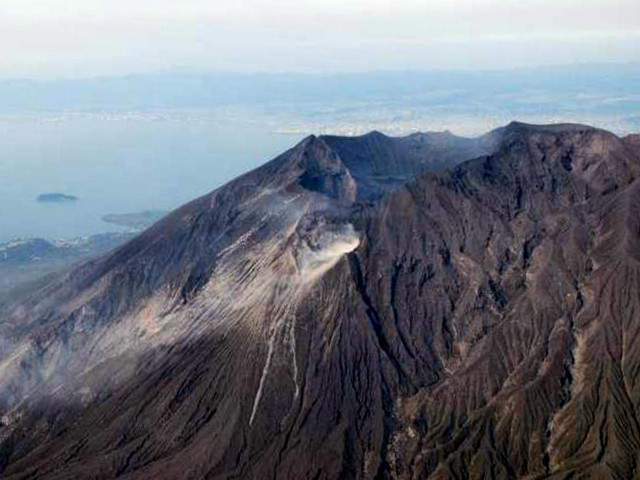[Tuttle got up front with the Marines just after they cleared out the top peaks and craters of Mthe great volcano in the center of Kagoshima Bay.]
It was assumed that any dead Jap was booby trapped. They were left behind for others to check out and disarm. This meant the Marines could not use the fighting holes those bodies were in, even though they were the best positions, dug deep into the inside of the crater rim. Across the crater other Japanese, with better weapons, were still dug in and alive. Marines in the open took rifle and machine gun fire from every direction. A few Japanese field guns even got in on the action, firing their last rounds from small bunkers before being overrun.
By smoke screen, mortars, artillery fire, air support, tenacity, and not a little sweat and blood, the 27th Marines eventually took the entire crater. The 26th Marines kept up outside the crater, leapfrogging itself over several spiny ridges on the west face. On the east face the 8th Cavalry had a harder time moving over a much wider stretch of haphazardly broken terrain.
A mile wide lava field, the youngest part of the island, provided scattered obstructions but very little cover to the advancing cavalrymen. Some Japanese positions still in place on the northeast face of Minami-dake could fire across the whole field. No Navy guns or established Army artillery could hit back at those positions. The cavalry regiment pushed forward anyway with what air support could be provided under unbroken rain clouds.
The first elements to complete their dash across the open lava field came within sight of an occupied coastal village. It was the only occupied settlement anyone had seen on the island. American soldiers were met well outside the town by a group of civilians, one of whom spoke passable English. The people hoped to avoid seeing their town pulverized by American artillery and bombs*.
A little snow fell late in the day, just as I caught up with the 26th Marines. I let someone important looking know I was there and made camp on a damp cold slope with Charlie Company of its Third Battalion. We were almost 3000 feet up, barely a mile from the shore. I don’t think anyone had a flat level spot to lie down on, except for the lucky few who found a spot on the rock soft enough to dig into.
* Division artillery orders reviewed later showed that the town was saved with less than two hours to spare.

